Annual Report 2021 - Vanderbilt University
Vanderbilt University QuarkNet 2021
Personnel
The Vanderbilt University QuarkNet group is mentored by William (Bill) Gabella. We advise the teachers and students on the use of the Cosmic Ray Muon Detectors (CRMDs), we maintain them, and we help with either setup of our loaned out CRMDs or with those that are permanently at a school. We also host the 5 day summer workshop for the teachers.
Cosmic Ray Muon Detectors
The Vanderbilt QuarkNet has three Center CRMDs: S/N 6181, 6165, 6891 (was with Berry) are three conventional cosmic ray muon detectors, and S/N 6925 is an "unconventional" one---it has smaller scintillator paddles. The DAQ Card for S/N 6925 is with Dave Hoppert. It is most useful for looking at attenuation of the muon flux with materials, like water, or bricks, stacked between pairs of scintillators. These are routinely loaned to our high school teachers for their club and classroom work. The laptops running the detectors are nearing 10 years old, so we are seeking newer ones. I do see long term steady singles rates, for weeks and months and then sudden changes also stable for weeks. Need to investigate further. We also have several CRMDs that are permanently in the schools:
S/N 6851 in Bowling Green, KY, with Diana Gigante;
S/N 6850 in Nashville, TN, with James Anderson;
S/N 6892 in Murfressboro, TN, with Kim Baumann; and
S/N 6795 in Cross Plains, TN, with Bill Hunnicutt.
We are using the Java program Equip for managing the CRMDs from the Fedora Linux laptops that we have. This works but there are several aspects of it that would be nice to have working and maintained: The GPS mapping and location no longer works. Perhaps an enhancement to output the scintialltor/CRMDS geometry in a file format that can be uploaded to eLab. Also a facility to output a spreadsheet of the rise and fall times of complete pulses like the older LabVIEW program capability would be helpful. We use a custom fortran program for this function. We understand that eLab can do this.
Dr. Gilberto Sanchez in Kentucky
Dr. Gilberto Sanchez who has been in QuarkNet reached out to Ken and eventually myself after his move to Louisville, KY. He is at Mairon C. Moore, Middle School, Louisville, KY, teaching science. We arranged for me to present some astronomy/astrophysics to his 7th grade class via Google Teams in March 2021. Except for some Teams online issues---my shared presentation went blank every 3-5 minutes forcing me to reconnect---the presentation went fine and the students seemed interested and asked good questions.
Summer Workshop 21-25 June 2021
The main activity of the Vanderbilt QuarkNet Group is hosting the five day workshop for current group members and new science teachers. The rules at Vanderbilt changed about one month before our workshop, and we were able to make it an in-person meeting, for full days. It was attended by 6 teachers, all current group members from the Metropolitan Nashville Schools, Williamson County Schools, TN, and Warren County Schools, KY. As usual it included talks by Vanderbilt faculty and graduate students, and review of using the CRMDs and the eLab facilities for Cosmic Ray Muons. The main focus this year was the two-day Coding Workshop presented by Jeremy Wegner and Ken Cecire.
On Monday we heard talks from faculty and graduates students on their research areas. Professor Johns discussed the CMS Pixel subsystem upgrades and the CMS detector in general, as well as life at CERN for the summer, in a pandemic year no less. Dale Julson a graduate student presented his dark matter studies using CMS data. He also did a good (re)introduction to the Standard Model of Particle Physics for the teachers. Another graduate student Collin Dabierri discussed his work observing effects from supermassive black holes at the centers of galaxies. Bill Gabella presented on gravitational waves and discussed news, updates, and recent results from the LIGO collaboration.
On Tuesday, we performed the "speed-of-light" experiment with the CRMDs, this could be done without the eLab facility which was down during the workshop. Besides a good general re-introduction to the CRMDs, this also serves to show the use of the data files without eLab. Google spreadsheets is generally good enough. It also serves to show the systematics, or the need for changing the position of the two detectors used for the calculation of distance/time to have the unknown time delays of the cables, connections, and electronics cancel out. Results are usually pretty good, perhaps 3%, though there may still be some systematics as the histograms of results skews to one side.
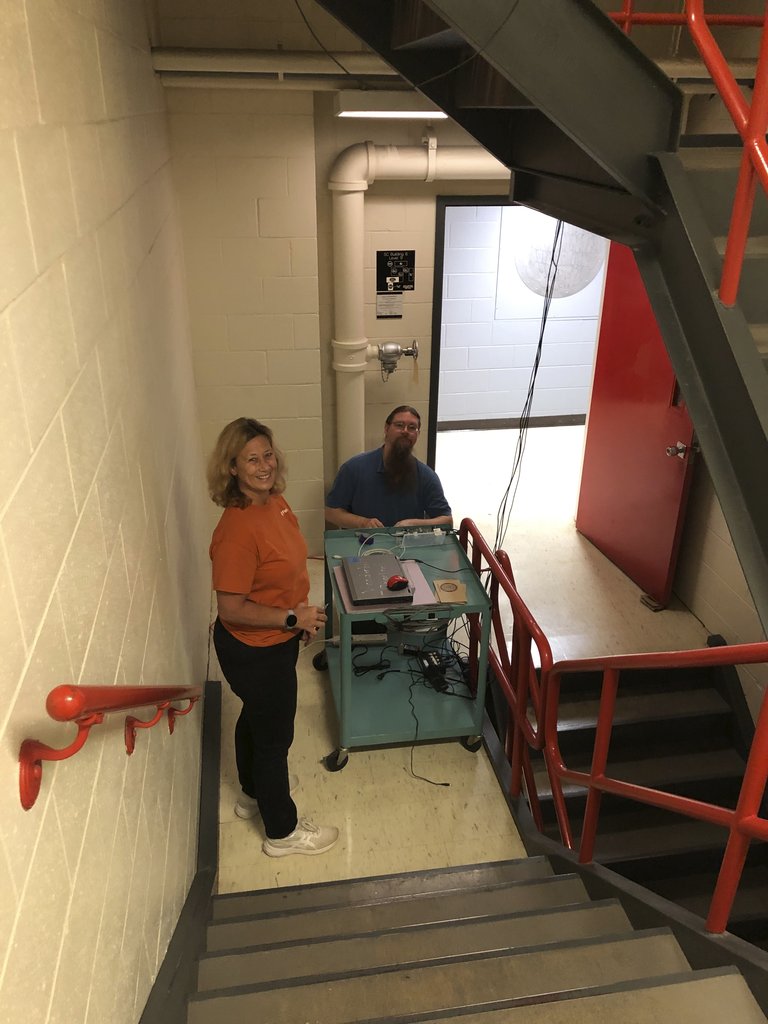
for the speed-of-light/muons experiment. |
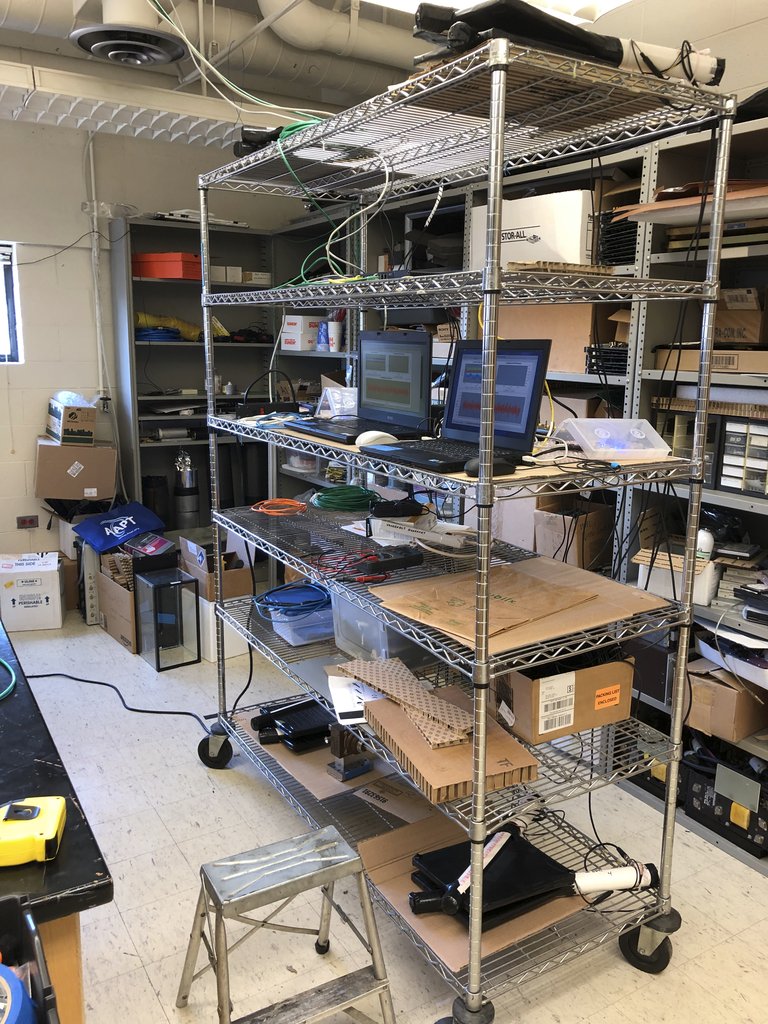
telescope with about 6 feet separation. |
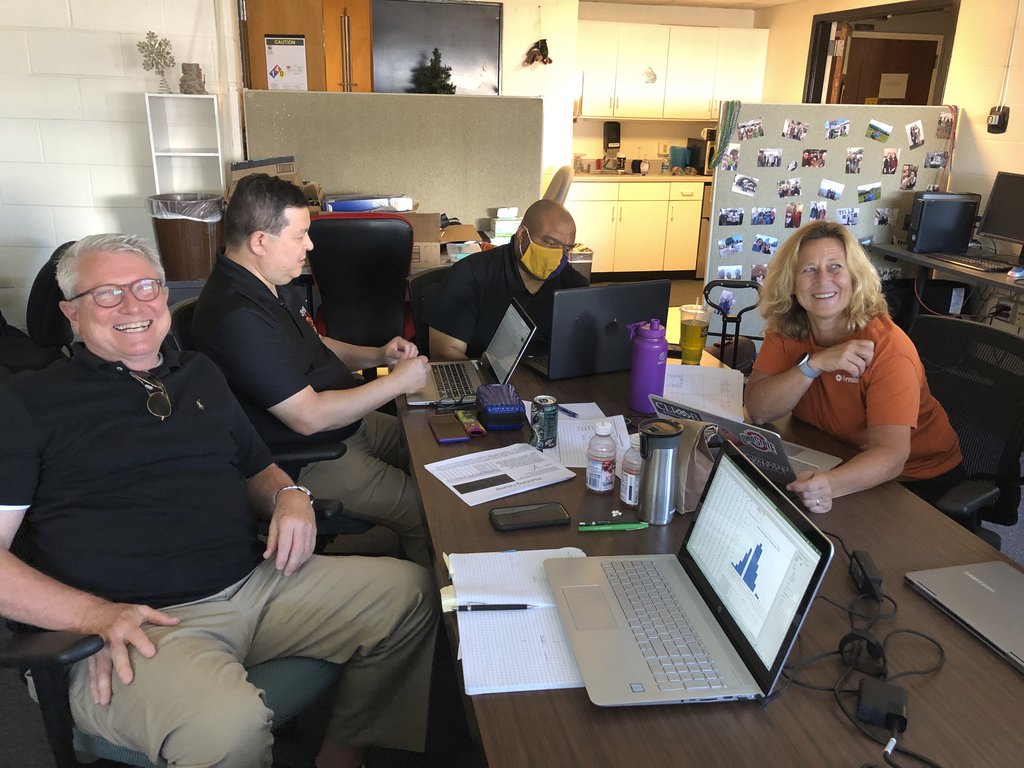
|
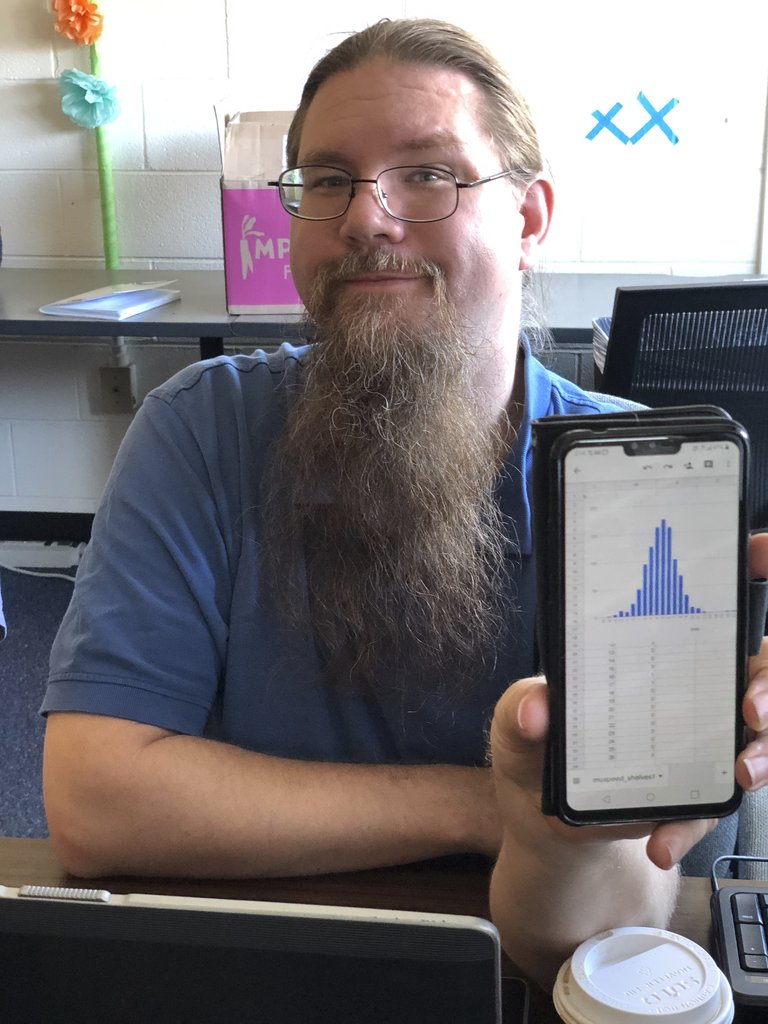
|
Wednesday to Friday morning, Jeremy took the lead with Ken helping out for the two-day Coding Workshop. It was exactly as we had hoped---good, strong introdution to Python using Google Colab (much like, and compatible with Jupyter notebooks). We have wanted for some time to introduce Python to the teachers to make sharing interesting data, data analysis, or interesting plots with the QuarkNet teachers. The majority of teachers received the workshop well, with one or two really excelling at manipulating the notebooks. Though one seemed quite put-off by the whole "coding thing." In one case, the tearcher followed the analysis of Dimuon data quite closely and when presented with the opportunity to run essentially the same notebook on a much large data set, she rose to the challenge. Her mass plot showed much greater structure, many, many, more peaks...as Ken and Jeremy intended. She then proceeded to discuss this with them and to look up the masses of the peaks to identify likely particles being produced in the decays.

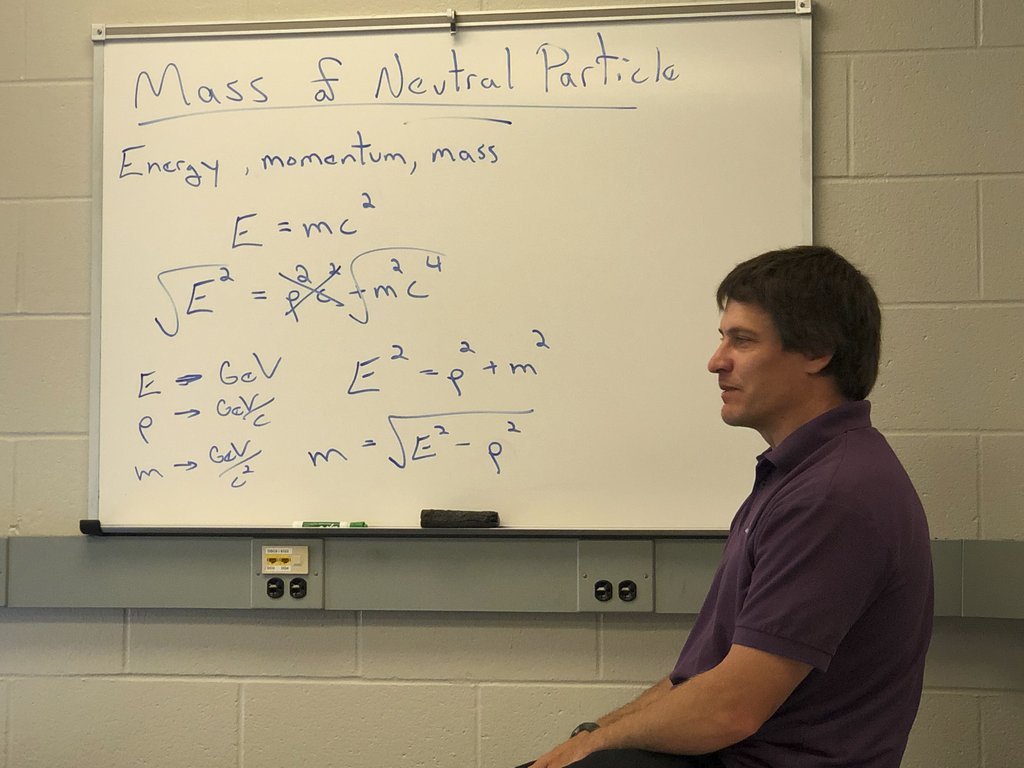
|
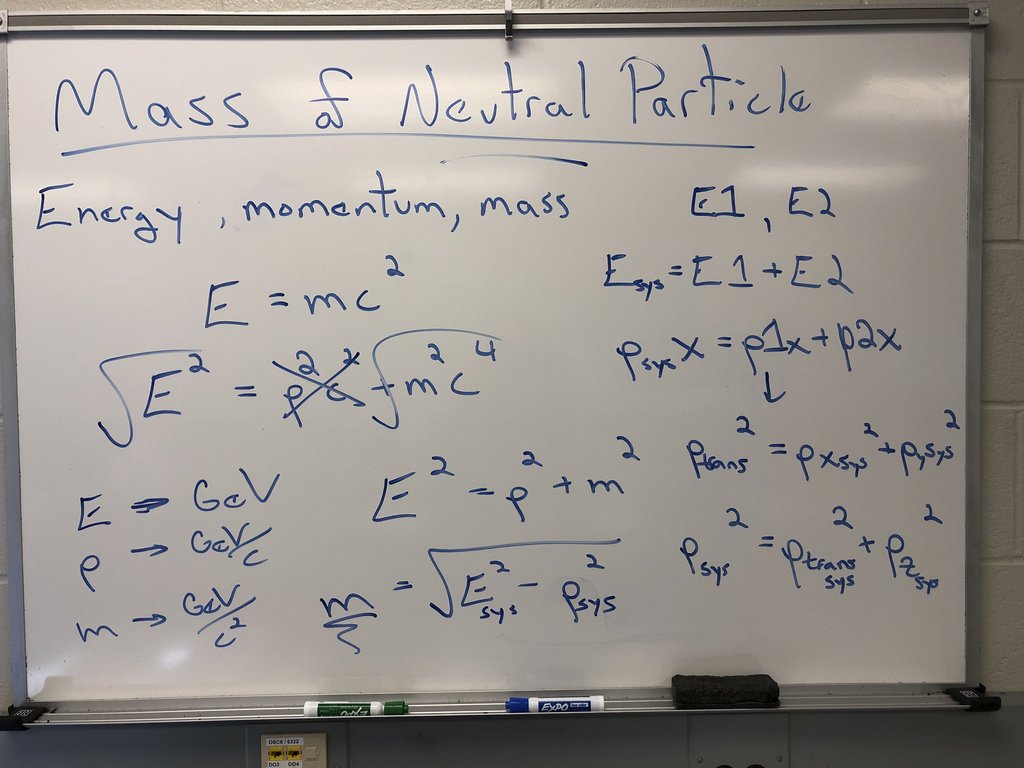
|
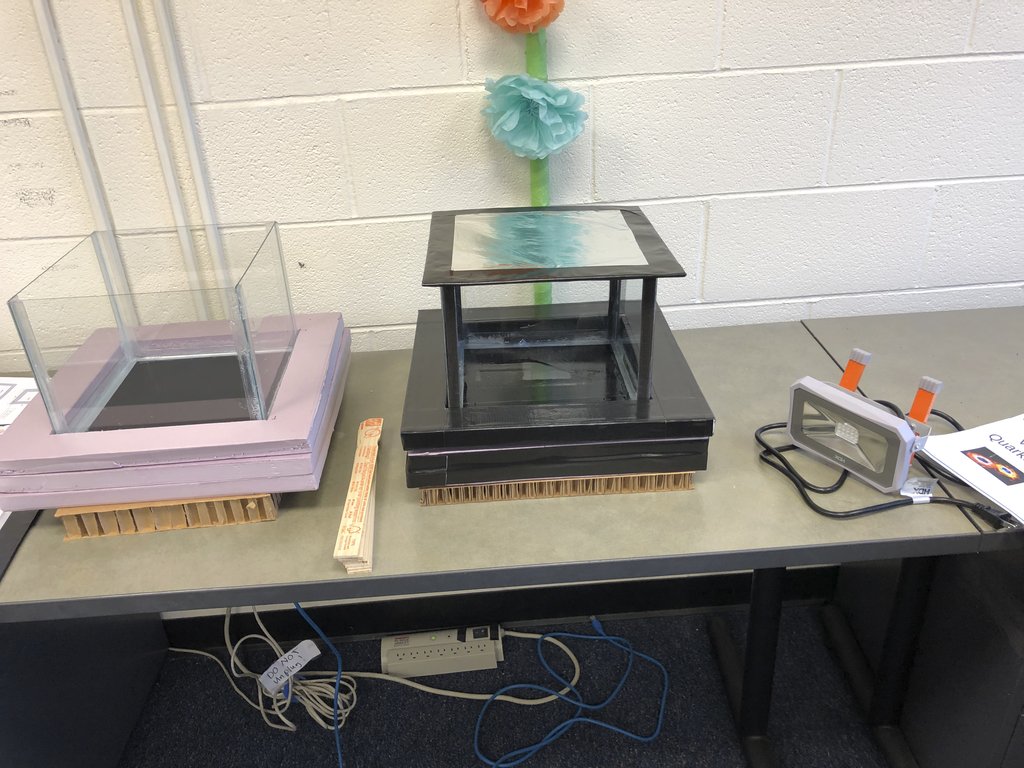
|
Friday we finished up some Coding Workshop activities and discussions. We did a survey for QuarkNet. And in the afternoon we discussed and constructed two cloud chambers, meant to be used with isopropyl alcohol and dry ice. The demo device, sort of, kind of, works, but we keep having trouble making cloud chambers that work well. Nashville humidity? Or lack of patience waiting for alcohol equilibrium?
Budget
Attendence for the 5 day workshop was perhaps a little low, we started with an initial announcement of virtual/Zoom only meeting following Vanderbilt's rules, and only a late announcment that the workshop would be in-person as those rules evolved. Other pandemic and personal considerations also made this an anomalous year for our attendance. Our budget is for the teacher stipends for the workshop, and some for parking. In the end, we spent 74% of the allocated budget.
Links of Interest
(New-ish) GitHub page for 2021 workshop https://github.com/gabella/VandyQuarkNet/tree/master/quarknet2021
Local web page http://www.hep.vanderbilt.edu/~gabellwe/qnweb
Facebook group page https://www.facebook.com/groups/682323215235912/
Vanderbilt QuarkNet Page (drupal, i.e. here) /group/vanderbilt-university-quarknet-center
[Written and edited by Bill Gabella 20210929]
